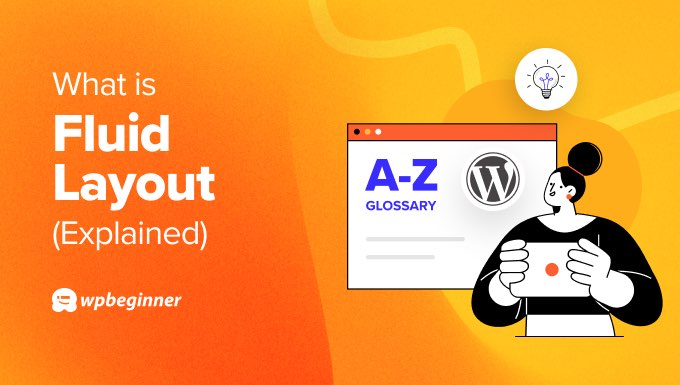In WordPress theme development, a fluid layout is a website design approach that uses proportional values as a measuring unit for blocks of content, images, and other items. This allows the website to adapt to different screen sizes and devices.
Fluid layouts use flexible units like percentages or ems to define the width of elements. This allows the content to resize and rearrange itself to fit the screen it’s being viewed on.
This is different from fixed layouts where every aspect of the theme has a fixed width in pixels.

What Are the Benefits of Fluid Layouts?
When creating a website or WordPress theme, designers and developers need to decide whether they want to create a fixed or fluid-width design.
Fixed-width designs are easier to create but have several flaws. In particular, they won’t provide the best experience for users with very large or very small screens.
Many users today have large screens with a higher resolution higher than 1024×768 pixels. Websites with a fixed layout may leave lots of white space on either side of the theme’s content.
For users with smaller screens or using mobile devices, a fixed design may require a horizontal scroll bar as well.
These problems can be fixed by using a fluid layout.
What Are the Challenges of Fluid Layouts?
Although fluid design solves many problems related to multiple screen sizes, it creates some problems of its own.
The designer has less control over what the user sees and content such as images may require multiple widths to be displayed on different resolutions.
If the user’s screen is extremely large, then web pages with little content and a fluid layout may not look their best.
Fluid Layouts and Responsive Design
With the increase in smartphone and tablet use, responsive development has become important.
This is not dissimilar to fluid layouts, and it is the process of creating a website or theme with all devices and screen sizes in mind.
The techniques of fluid design, along with CSS media queries, will often be used to create a website or theme that is ‘responsive’.
We hope this article helped you learn more about fluid layouts in WordPress. You may also want to see our Additional Reading list below for related articles on useful WordPress tips, tricks, and ideas.
If you liked this article, then please subscribe to our YouTube Channel for WordPress video tutorials. You can also find us on Twitter and Facebook.




